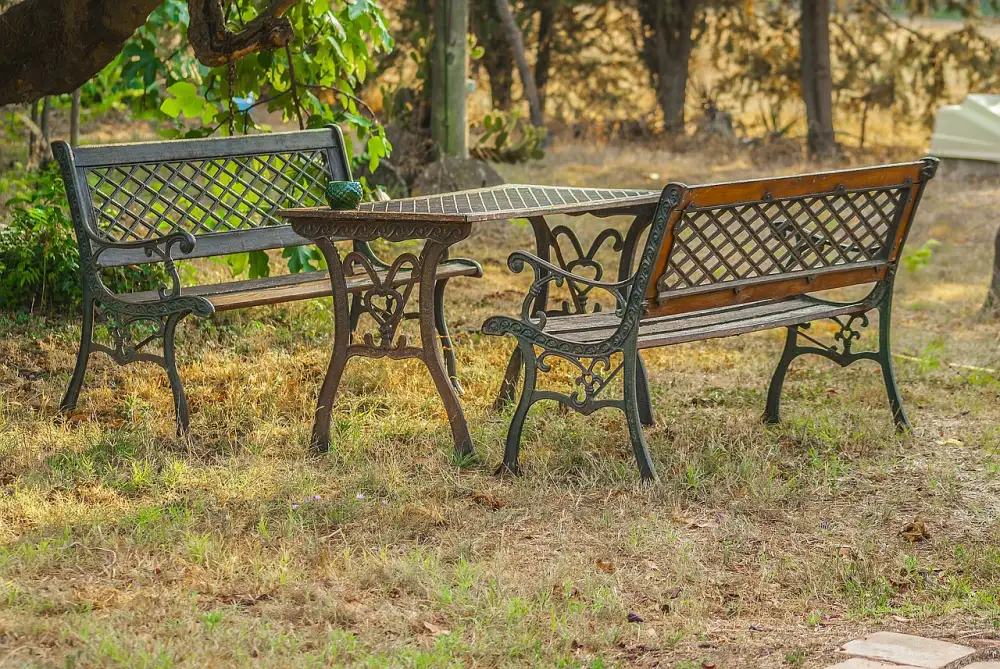Master the Art of Cleaning a Cast Iron Pan: Essential Tips for a Spotless Home

- Gather necessary supplies for cleaning
- Step-by-step instructions for cleaning a cast iron pan
- Scrape off any food residue
- Rinse with hot water
- Use a mild dish soap if necessary
- Dry the pan thoroughly
- Apply a thin layer of oil to prevent rust
- Tips for maintaining a cast iron pan's seasoning
- Common mistakes to avoid when cleaning a cast iron pan
Cleaning a cast iron pan is an essential task that every home cook should master. Not only does proper cleaning ensure a spotless kitchen, but it also helps maintain the longevity and performance of your beloved cast iron pan. Neglecting to clean your pan properly can lead to food residue buildup, rust formation, and even the loss of its well-seasoned surface. In this article, we will guide you through the necessary steps to achieve a sparkling clean cast iron pan, ensuring that you can continue creating culinary wonders with ease. So let's dive in and discover the secrets to mastering the art of cleaning a cast iron pan!
Gather necessary supplies for cleaning
To effectively clean a cast iron pan, it is important to gather the necessary supplies beforehand. Here's what you'll need:
1. A stiff-bristled brush or sponge: This will help you remove any stubborn food particles without damaging the pan's surface.
2. Hot water: Make sure to have access to hot water for rinsing the pan thoroughly.
3. Mild dish soap (optional): While not always necessary, having a mild dish soap on hand can be helpful for removing tough stains or grease.
4. Paper towels or a clean cloth: These will be used to dry the pan after cleaning.
5. Cooking oil or seasoning wax: To prevent rust and maintain the pan's seasoning, you'll need oil or wax specifically designed for cast iron pans.
By gathering these supplies in advance, you'll be well-prepared to tackle the task of cleaning your cast iron pan effectively and efficiently.
Step-by-step instructions for cleaning a cast iron pan
a. Start by scraping off any food residue using a spatula or a stiff brush. Be gentle to avoid scratching the surface.
b. Rinse the pan with hot water to remove any remaining debris. Avoid using soap at this stage, as it can strip away the pan's seasoning.
c. If necessary, use a mild dish soap to tackle stubborn stains or odors. Make sure to rinse thoroughly afterwards.
d. After cleaning, dry the pan thoroughly using a clean towel or by placing it on low heat on the stovetop until all moisture evaporates.
e. To prevent rust, apply a thin layer of oil to the entire surface of the pan while it is still warm. Use a paper towel to spread the oil evenly and remove any excess.
Following these steps will ensure that your cast iron pan remains in top condition and ready for your next cooking adventure!
Scrape off any food residue
Scraping off any food residue is the first step to cleaning a cast iron pan. Start by using a spatula or a stiff brush to remove any stuck-on bits of food. Be gentle yet thorough, ensuring that all remnants are removed from the surface of the pan. This will make the subsequent cleaning steps much easier and more effective. Remember not to use any harsh abrasives that can damage the seasoning on the pan.
Rinse with hot water
After scraping off any food residue from the cast iron pan, the next step is to rinse it with hot water. This helps to remove any remaining debris and clean the surface of the pan. The hot water helps to loosen any stuck-on particles and makes it easier to clean. Be sure to use hot water instead of cold water, as cold water can cause the pan to contract and potentially lead to warping. Rinse the pan thoroughly, making sure all the soap or detergent is washed away. This step is crucial in ensuring that your cast iron pan is properly cleaned and ready for its next use.
Use a mild dish soap if necessary
Step 3c: Use a mild dish soap if necessary
In some cases, simply rinsing with hot water may not be enough to remove stubborn food residue from your cast iron pan. If you find yourself in this situation, don't worry! You can use a mild dish soap to help break down the grease and grime.
However, it's important to note that using dish soap should be a last resort. Cast iron pans develop a natural non-stick surface called seasoning, and using soap too frequently can strip away this protective layer. So, only use dish soap when absolutely necessary.
To clean with dish soap, apply a small amount onto a soft sponge or cloth. Gently scrub the pan, focusing on the areas with stuck-on food. Avoid using abrasive scrubbers or steel wool as they can damage the seasoning.
After cleaning with soap, rinse the pan thoroughly with hot water to ensure all traces of soap are removed. Then proceed to dry the pan completely before moving on to the next step.
Remember, while dish soap can be helpful in certain situations, it's best to rely on hot water and gentle scraping as your primary cleaning method for maintaining the integrity of your cast iron pan's seasoning.
Dry the pan thoroughly
After rinsing the cast iron pan with hot water, it is crucial to dry it thoroughly. Leaving any moisture on the pan can lead to rusting, which can ruin the integrity of the pan. To dry the pan, use a clean kitchen towel or paper towels and gently pat it dry. Make sure to remove all traces of water from both the inside and outside of the pan. If needed, you can also place the pan on low heat on the stove for a few minutes to ensure complete drying. Remember, a properly dried cast iron pan will last for generations and provide you with delicious meals for years to come.
Apply a thin layer of oil to prevent rust
After thoroughly drying the cast iron pan, it is crucial to apply a thin layer of oil to prevent rust. This step is essential for maintaining the longevity and performance of your pan. The oil acts as a protective barrier, preventing moisture from coming into contact with the iron and causing rust. To apply the oil, simply pour a small amount onto a paper towel or cloth and rub it all over the surface of the pan, including the handle. Make sure to coat both the interior and exterior surfaces evenly. Once applied, you can either store the pan in a dry place or use it immediately for cooking. Remember to reapply oil after each use to keep your cast iron pan in pristine condition. With this simple step, you can ensure that your cast iron pan remains rust-free and ready for many delicious meals to come.
Tips for maintaining a cast iron pan's seasoning
1. Avoid using harsh cleaning agents or scrub brushes that can strip away the seasoning. Stick to gentle dish soap and a soft sponge.
2. After each use, wipe the pan clean with a paper towel or cloth. This helps remove any excess oil or food particles that can cause the seasoning to become sticky or go rancid.
3. Regularly apply a thin layer of oil to the pan's surface. This helps replenish the seasoning and keeps it well-protected against moisture and rust.
4. Store your cast iron pan in a dry place to prevent moisture buildup, which can lead to rust formation. If necessary, you can even place a paper towel inside the pan to absorb any residual moisture.
5. Avoid cooking highly acidic foods like tomatoes or citrus fruits in your cast iron pan too often, as they can break down the seasoning over time. If you do cook such foods, make sure to re-season your pan afterwards.
By following these simple tips, you'll be able to maintain your cast iron pan's seasoning and enjoy its non-stick properties for years to come!
Common mistakes to avoid when cleaning a cast iron pan
1. Using harsh abrasive cleaners: Avoid using harsh scrub brushes or abrasive cleaners as they can strip away the seasoning of the pan and cause damage.
2. Soaking for too long: While it's important to rinse the pan with hot water, avoid soaking it for extended periods as this can lead to rusting.
3. Skipping the drying step: Always make sure to dry the pan thoroughly after washing to prevent moisture from causing rust.
4. Scrubbing too vigorously: While it's necessary to remove any food residue, scrubbing too vigorously can remove the seasoning. Use a gentle touch when cleaning.
5. Storing without oiling: After cleaning, always apply a thin layer of oil to protect the pan from rusting during storage. Skipping this step can lead to corrosion.
By avoiding these common mistakes, you can ensure that your cast iron pan remains in great condition and continues to provide delicious meals for years to come.
In conclusion, mastering the art of cleaning a cast iron pan is essential for maintaining its longevity and ensuring delicious meals every time. By following the step-by-step instructions and using the right supplies, you can easily keep your pan spotless and ready for use. Proper cleaning not only removes food residue but also prevents rust and maintains the pan's seasoning. Avoiding common mistakes will further enhance its durability. So, embrace the benefits of proper cleaning and maintenance to enjoy a world of culinary wonders with your cast iron pan!
Published: 11. 01. 2024
Category: Home



